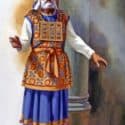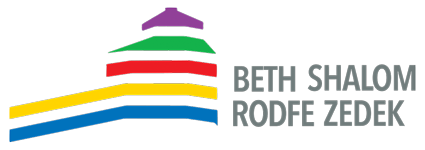
Parashat Tzav: Spring Cleaning
We are now a bit further into the Book of Leviticus. This week we read from Parashat Tzav (Leviticus 6:1-8:36). We learn three primary points throughout these chapters:
- The 5 sacrifices that the Priests are supposed to perform are described.
- Rules related to the consumption of meat are discussed.
- Details about the ordination of Aaron and his sons are provided.
The laws and rituals which are relevant to the life and work of the Priests are, as we discussed last week, difficult for us to understand or find meaningful.
Even stranger are rules like this:
The priest shall dress in linen raiment, with linen breeches next to his body; and he shall take up the ashes to which the fire has reduced the burnt offering on the altar and place them beside the altar. He shall then take off his vestments and put on other vestments, and carry the ashes outside the camp to a clean place. (Lev. 6:3-4)
Let’s break this down: the Priest gets dressed in linen (nothing between the linen and his body). He then picks up the ashes from the altar. He puts them down next to the altar. Next, he changes his clothes completely. Finally, he carries the ashes outside the camp for disposal.
All of this to clean up the altar?!?
Why the detailed removal of the ashes? Why the specifics regarding his two sets of clothing? And why dress in priestly garb just to “take out the trash?”
The Talmud believes that the second set of clothing must be less sacred than the first:
The Gemara returns to the mitzva of removing the ashes from the altar and associated issues. The Sages taught in a baraita: The Torah states, after describing the removal of the ashes: “And he shall put off his garments, and put on other garments, and carry the ashes out of the camp to a clean place” (Leviticus 6:4). I might understand from here that this change of garments is a mitzva to change into a different kind of garment, similar to the change of garments performed on Yom Kippur, when the High Priest changes back and forth from gold clothes to white clothes. Here, too, the Torah requires that he remove his sacred garments and put on non-sacred garments. (Yoma 23b)
Rashi agrees that the Priest wears a slightly inferior set of clothing so as not to soil his most elegant priestly robes:
ופשט את בגדיו AND HE SHALL PUT OFF HIS GARMENTS — This is not compulsory but it is a matter of decency so that he should not, through removing the ashes, soil the garments in which he has regularly to minister at the altar; in the clothes he wore when he boiled the pot for his master (a menial task) he should not pour out a glass of wine for him (an honourable office). On this account it states: And he shall put on other garments — inferior to those in which he ministers at the altar.
Can you think of an analogy in our lives? How is our clothing dictated by the setting, occupation, or task at hand? When do we change clothes mid-day and why?
Our Haftarah portion is special for Shabbat HaGadol (the Great Sabbath), the Shabbat immediately preceding Pesach. We read Malachi 3:4-24 in honor of this special occasion. Malachi speaks of Elijah the prophet, whom God will send before the coming of the “Great,” awesome day of the Eternal (Yom Adonai HaGadol v’HaNorah). This reminds us of the tradition of opening the door for Elijah during our Seder, and praying that, perhaps, this will be the year that he visits us and heralds the coming of the Messianic era.
I wish you and your families a Shabbat filled with peace and a Zissen Pesach! Chag Sameach!





